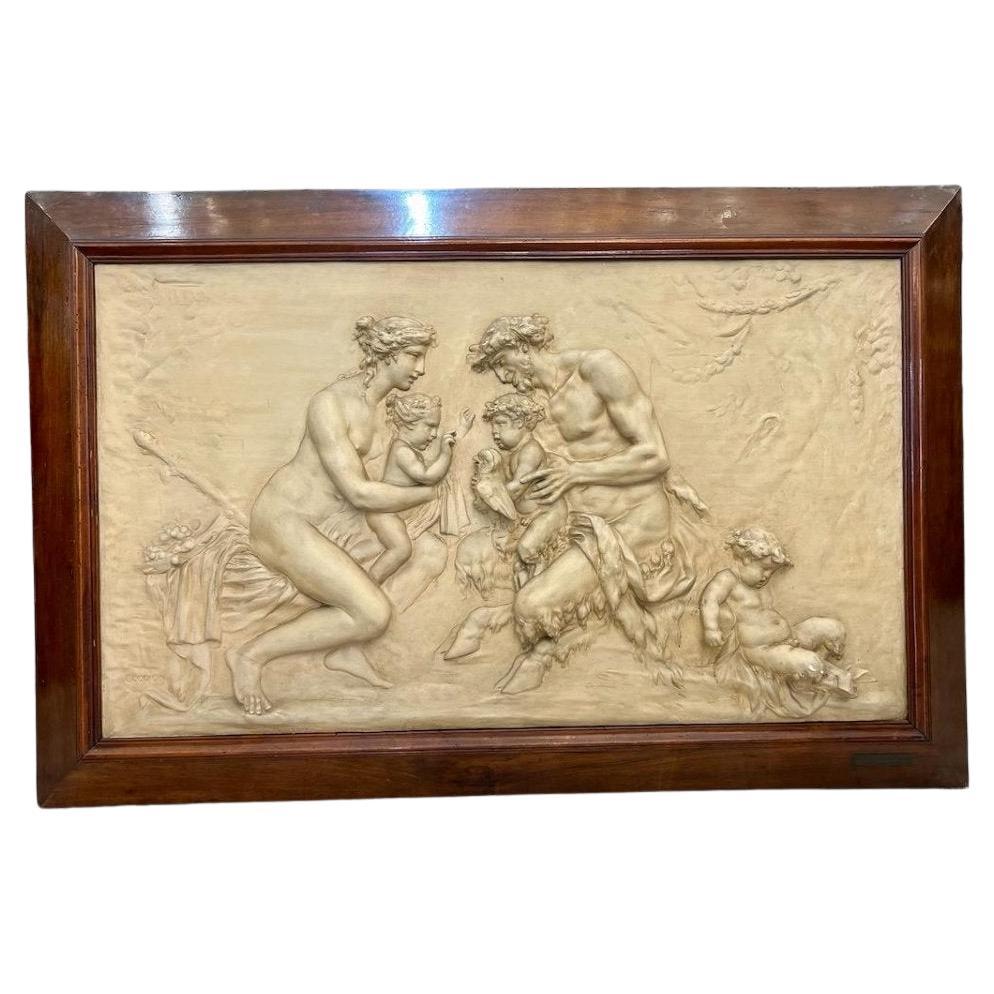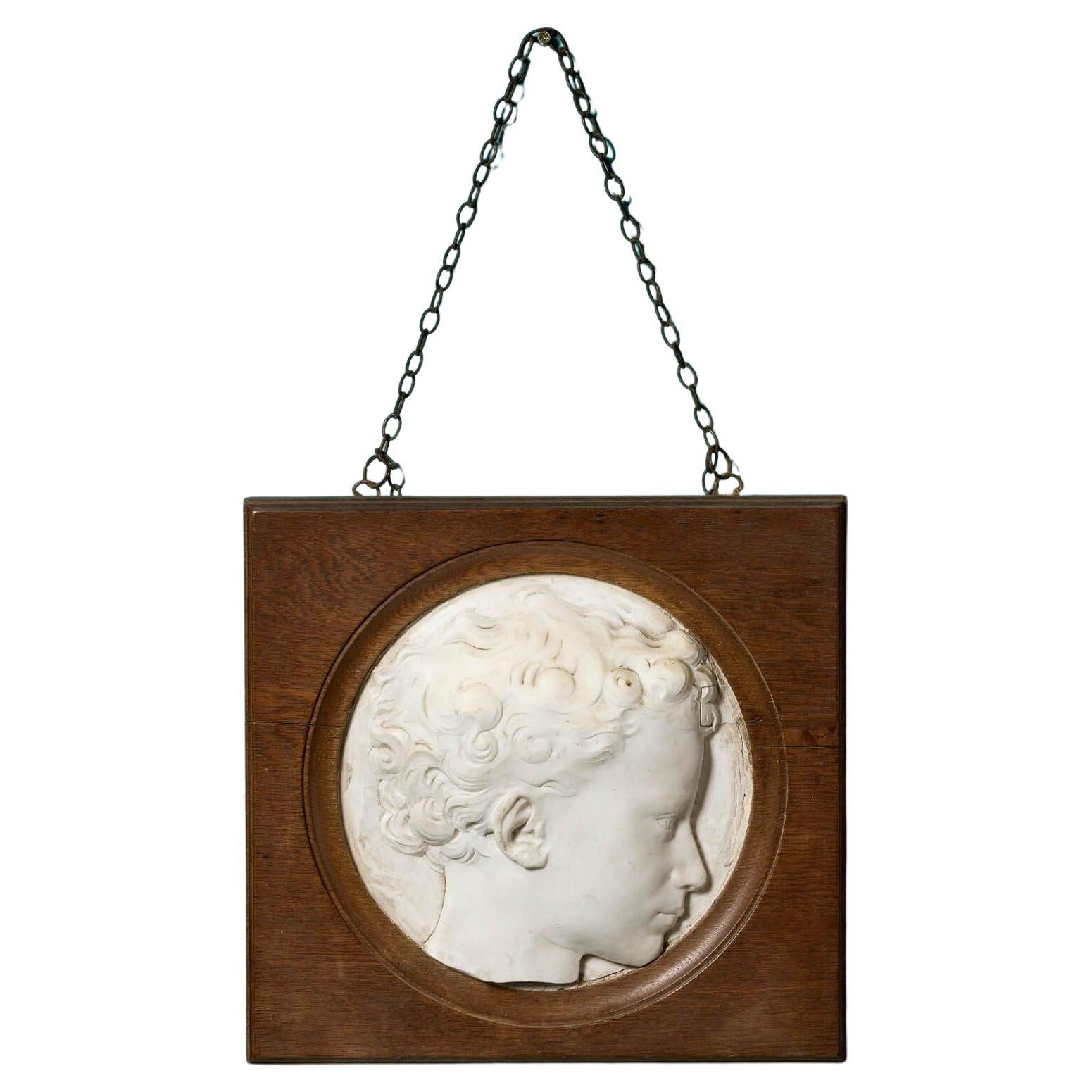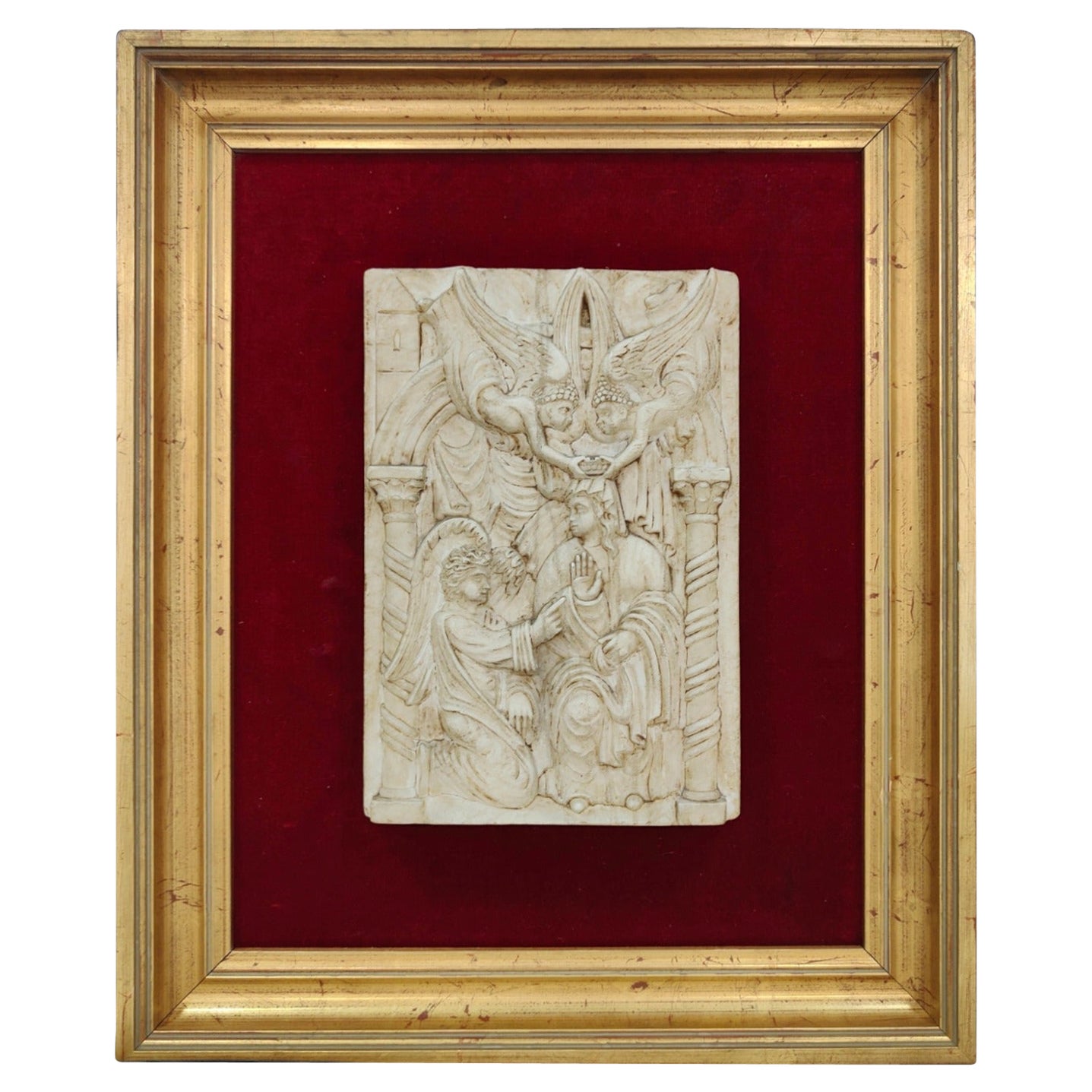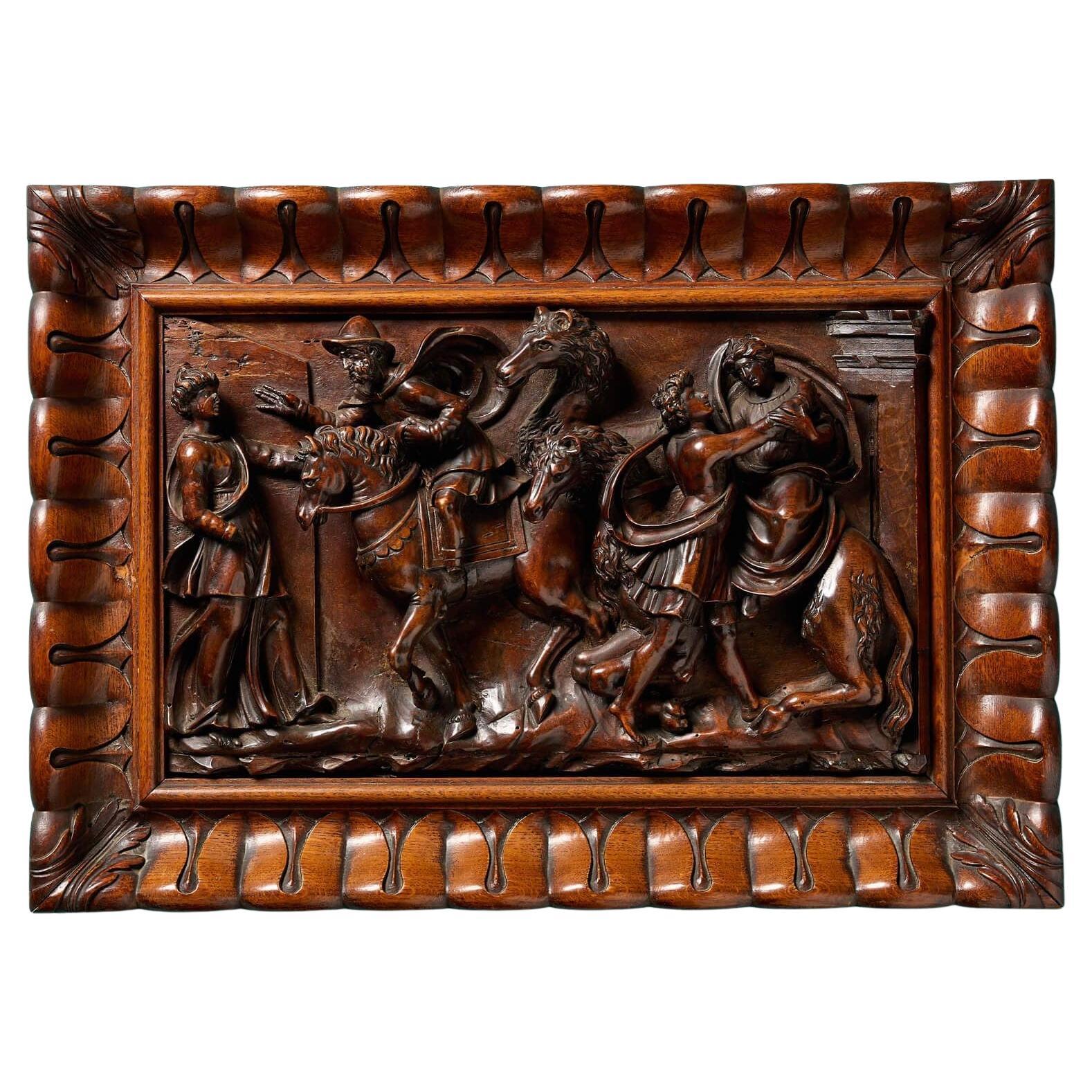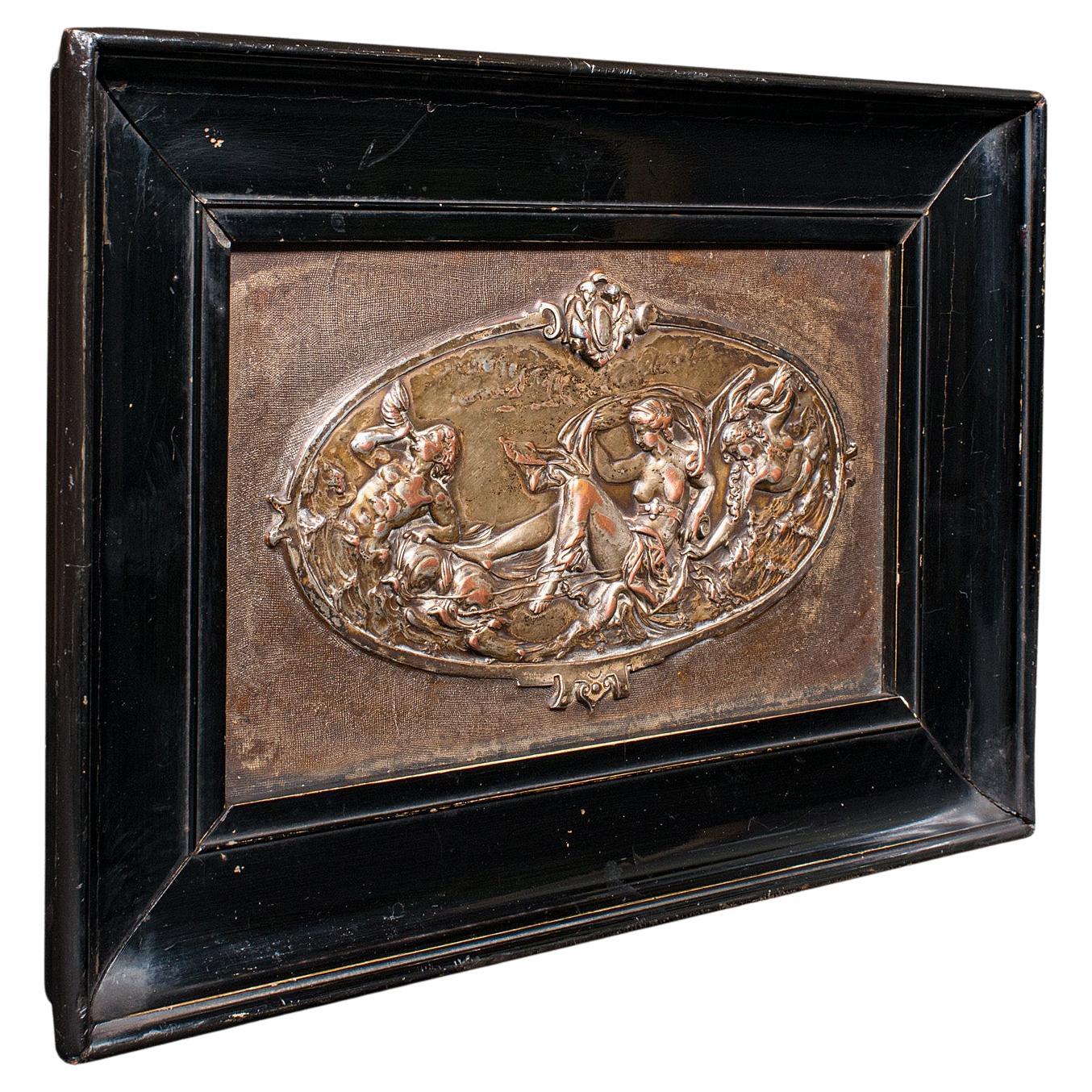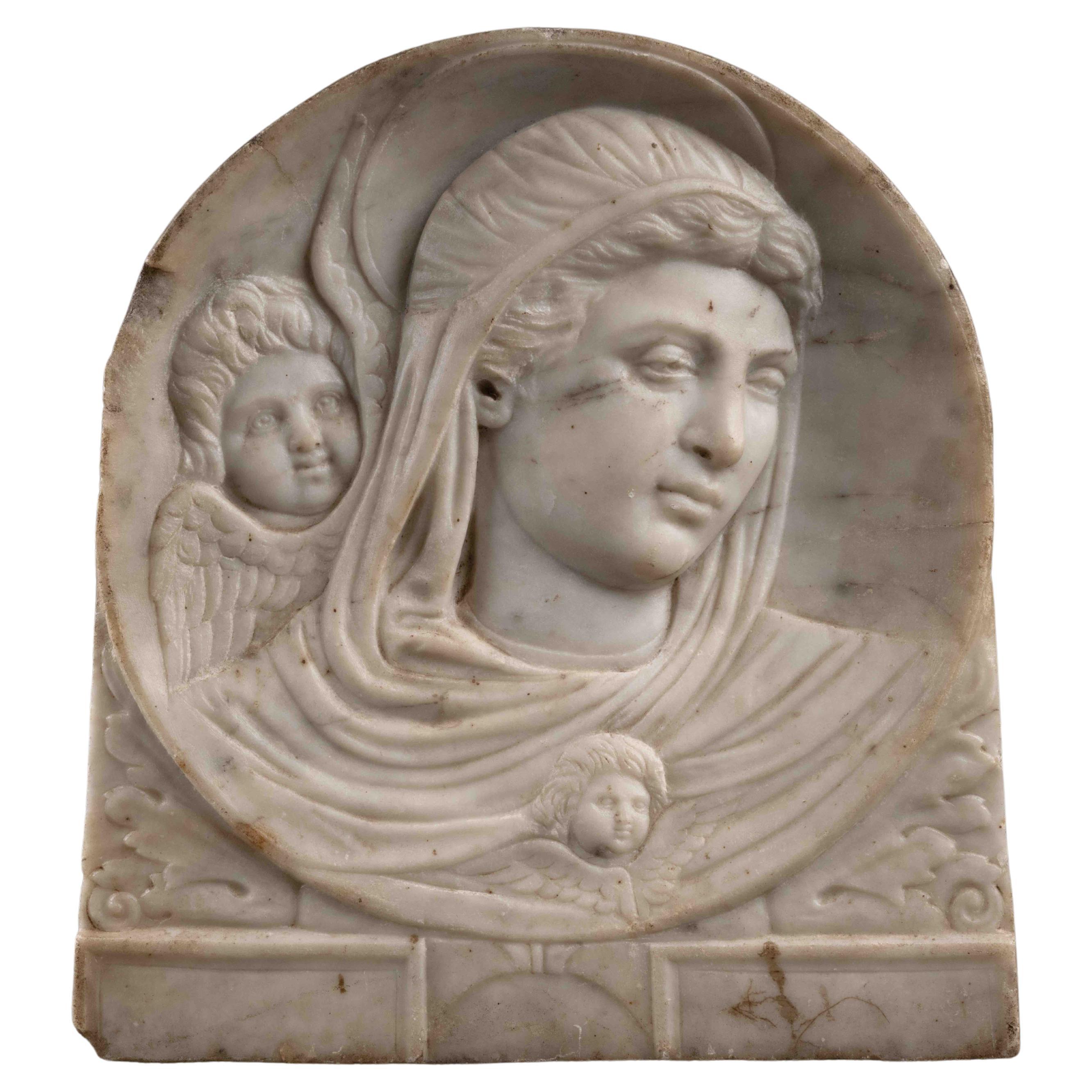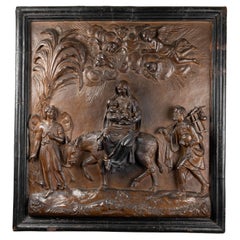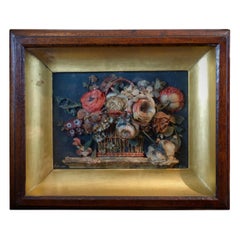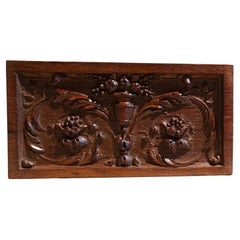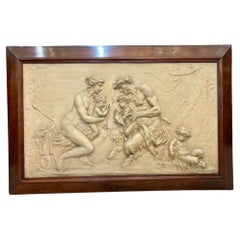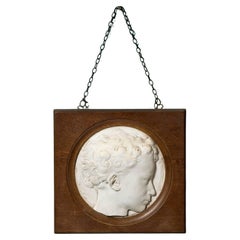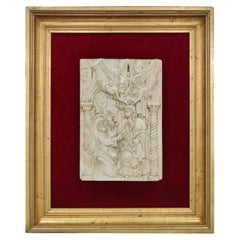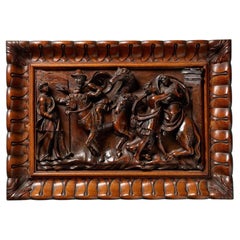Items Similar to Renaissance relief - Italy, probably Rome, 16th century
Want more images or videos?
Request additional images or videos from the seller
1 of 8
Renaissance relief - Italy, probably Rome, 16th century
$6,115.81
$8,154.4225% Off
£4,549.55
£6,066.0625% Off
€5,100
€6,80025% Off
CA$8,374.64
CA$11,166.1925% Off
A$9,311.46
A$12,415.2825% Off
CHF 4,861.93
CHF 6,482.5725% Off
MX$113,343.13
MX$151,124.1725% Off
NOK 62,036.11
NOK 82,714.8125% Off
SEK 58,124.87
SEK 77,499.8325% Off
DKK 38,823.48
DKK 51,764.6425% Off
Shipping
Retrieving quote...The 1stDibs Promise:
Authenticity Guarantee,
Money-Back Guarantee,
24-Hour Cancellation
About the Item
Renaissance relief depicting two female figures dressed in a chiton
Italy, probably Rome, 16th century
Marble, wooden frame (provenance label on the back)
28 x 20 x 5 cm
This beautiful Renaissance fragment depicts two female figures in profile, wearing a typical Greek dress, the chiton. Made of light material, the chiton was a very long and wide rectangle of fabric, sewn up at the sides, pinned or sewn at the shoulders, and typically girded around the waist.
Their long, wavy hair is partially gathered at the back of the head.
The all’antica clothing suggests that the depicted scene is related to ancient mythology. The humanist movement helped shift the focus of art from religious to secular subjects.
The Renaissance, with a renewed interest in the art and culture of ancient Greece, led to a revival of mythological and classical themes in art. Artists often reinterpreted Greek myths, adapting and reimagining ancient Greek narratives to fit Christian values.
Renaissance artists approached classical culture with a certain reverence; its manifestations were worthy of being studied, imitated, and emulated. Humanists examined texts with philological acuity, immersing themselves in Greek and Latin texts. They measured ancient edifices, copied carved inscriptions, deciphered images on coins and gemstones, described statues and other articles of sculpture, and identified scenes on sarcophagi. This new, humanistic approach to the Roman past as a historically distinct era encouraged the all'antica scupture of classical subjects, including familiar mythological tales.
The graceful, balanced composition and the classicizing subject exemplify the revival and reimagining of antiquity, fundamental to the Italian High Renaissance.
- Dimensions:Height: 11.03 in (28 cm)Width: 7.88 in (20 cm)Depth: 1.97 in (5 cm)
- Style:Renaissance (Of the Period)
- Materials and Techniques:
- Place of Origin:
- Period:
- Date of Manufacture:16th century
- Condition:Wear consistent with age and use.
- Seller Location:Bruxelles, BE
- Reference Number:1stDibs: LU6666240667542
About the Seller
5.0
Vetted Professional Seller
Every seller passes strict standards for authenticity and reliability
1stDibs seller since 2022
15 sales on 1stDibs
Typical response time: 4 hours
- ShippingRetrieving quote...Shipping from: Bruxelles, Belgium
- Return Policy
Authenticity Guarantee
In the unlikely event there’s an issue with an item’s authenticity, contact us within 1 year for a full refund. DetailsMoney-Back Guarantee
If your item is not as described, is damaged in transit, or does not arrive, contact us within 7 days for a full refund. Details24-Hour Cancellation
You have a 24-hour grace period in which to reconsider your purchase, with no questions asked.Vetted Professional Sellers
Our world-class sellers must adhere to strict standards for service and quality, maintaining the integrity of our listings.Price-Match Guarantee
If you find that a seller listed the same item for a lower price elsewhere, we’ll match it.Trusted Global Delivery
Our best-in-class carrier network provides specialized shipping options worldwide, including custom delivery.More From This Seller
View AllRenaissance Marble Relief - Emilia Romagna, 1470-80
Located in Bruxelles, BE
Renaissance Marble Relief
Emilia Romagna, Faenza ? 1470-80
H 30,2 x L 33 x P 3,5 cm
The carved marble relief depicts the Virgin accompanied by a winge...
Category
Antique 15th Century and Earlier Italian Renaissance Figurative Sculptures
Materials
Marble
Large Terracotta Relief - Lombardy, First Half of 17th Century
Located in Bruxelles, BE
Large Terracotta relief of the flight into Egypt
Lombardy, first half of 17th century
Painted terracotta
91 x 85 x 11,5 cm
This event in the early life of Christ is recounted i...
Category
Antique 17th Century Italian Baroque Figurative Sculptures
Materials
Terracotta
$62,357 Sale Price
20% Off
Wax Relief, Italy 19th Century
Located in Bruxelles, BE
Wax relief depicting a vase with flowers
Italy, mid-19th century
Signed "Scot. inv et fecit"
Measures: 37 x 44 x 7,5 cm.
Category
Antique Mid-19th Century Italian Early Victorian Wall-mounted Sculptures
Materials
Wood
$2,878 Sale Price
20% Off
Decorative Carved Panel - France, 19th Century
Located in Bruxelles, BE
Decorative Carved Panel
France, 19th Century
15,5 x L 30,5 x 3 cm
Carved in richly grained wood, this 19th-century decorative panel draws direct inspiration from Renaissance ornamen...
Category
Antique Early 19th Century French Renaissance Wall-mounted Sculptures
Materials
Wood
Tuscan Coat of Arms
Located in Bruxelles, BE
Tuscan Coat of Arm in terra-cotta signed "A. Salvietti 187x"
Signed and Dated "A. Salvetti 187x"
73 x 48 cm
Antonio Salvietti (1854-1931) was an Italian architect and painter.
He w...
Category
Antique 19th Century Italian Beaux Arts Wall-mounted Sculptures
Materials
Terracotta
$6,835
Cercle of Jacopo della Pila - Marble relief depicting a winged Cherub
Located in Bruxelles, BE
Cercle of Jacopo della Pila (Lombard, in Naples 1471-1502)
Marble relief depicting a winged Cherub
Naples, second half of15th century
40 x 57 x 12 cm
Exquisitely carved, this relief portrays a winged cherub with cascading hair and delicate features. The cherub's plump, smooth countenance, rounded cheeks, outlined lips, and finely drawn nose emanate a sense of tenderness. The quadrangular module, is adorned with a carved frame. The relief ascends gradually, transitioning from the low relief of the wings to the high relief of the head.
The rectangular frame and the subtly curved form of the artwork suggest that the relief likely adorned the upper part of an arch or a vaulted chapel. The type is that of the perspective room with a coffered ceiling decorated with figures of winged cherubs, which is found in various Neapolitan chapels of the 15th century. Coffered ceilings attest to the recovery of antiquity and the search for luxury in Renaissance architecture, first in Florence, then in Rome and Naples. The majority of the numerous family chapels and tombs built during the late fifteenth century in south of Italy employ the new formal vocabulary of the Florentine Renaissance in a self-confident manner that permitted a broad spectrum of variations.
The escalating admiration for the classical world, coupled with the development of perspective, significantly contributed to the Renaissance endorsement of coffered ceilings. This artistic and constructive device drew inspiration from the intricate marble patterns observed in historical landmarks such as the Arch of Titus, the Temple of Vesta in Tivoli, the Pantheon, and the Basilica of Maxentius. A distilled product of both mathematical and artistic cultures, deeply scrutinizing the ancient world, the coffered ceiling plays a vital role in the perspective construction of space with its regular and directional geometry. The motif of the coffered ceiling decorated with cherubs in relief was introduced in Naples by Francesco Laurana in the plastic decoration of the Arch of Castelnuovo. Laurana's impact on the art scene in the south of Italy was profound. The introduction of the winged cherub into the region's artistic vocabulary bridged the gap between the classical and the contemporary, creating a synthesis that resonated with both aesthetic and spiritual sensibilities. His influence extended beyond the immediate visual appeal, shaping the cultural identity of the Renaissance in southern Italy. Although the plastic decoration of the Arch of Castelnuovo cannot certainly be ascribed to a mature Renaissance style, it was precisely on this occasion that the sculptors who worked there could get to know and export throughout the Italian peninsula that type of "Florentine classicism" which, even in the 15th century Naples, was conditioned by the Burgundian culture imported into the Kingdom by Alfonso of Aragon himself, with artists called from Spain and Northern Europe. The coffered ceiling, with its geometric patterns and Laurana's winged cherubs nestled within, became a symbol of refinement and cultural sophistication. The relief sculptures, carefully integrated into the overall design, transformed the ceiling into a celestial realm, inviting viewers to contemplate the divine while immersed in the grandeur of the Renaissance space.
Similar winged cherubs appears also in the Naples cathedral. Within the renowned Succorpo Chapel, a mesmerizing marble coffered ceiling adorned with cherubs epitomizes the splendor of the Neapolitan Renaissance. The interplay of light and shadow on the textured surface of the marble coffered ceiling introduces an ethereal dimension, providing an immersive visual experience for observers. The geometric precision and the repeated patterns, reminiscent of classical motifs, establish a sense of harmony and balance that has become the hallmark of the Neapolitan interpretation of Florentine Renaissance aesthetics.
Although probably intended to be admired from a distance, this cherub is intricately detailed and exquisitely rendered: the face and hair are elegantly outlined and the feathers are textured through juxtaposed lines. The marble, both figurative and decorative, adheres to the principles of balance and restrained ornamentation typical of the « Florentine Classicism ». Harmonious shapes and gracefully orchestrated curves , rooted in the classical repertoire, converge to evoke a sense of ethereal beauty. The surface displays the masterful use of a chisel to intricately carve the feathers and facial features, creating an almost abstract quality.
This work is a testament to a sculptor of great skill and rich figurative knowledge, seamlessly blending classical firmness in contours with a refined treatment of the marble's surface. The combination of tradition and innovation point to a stylistic idiom from Lombardy, in particular we can find some comparaisons with the works of Jacopo della Pila, sculptor of Lombard origin working in Naples in the second half of the 15th century. He is documented there between 1471 and 1502, and is a protagonist of the Aragon Renaissance in the second half of the Quattrocento, together with the other great Northern sculptor active in the kingdom, Domenico Gagini.
the first commission he received dates back to August 9, 1471, when Jacopo publicly committed to sculpting the funerary monument of Archbishop Nicola Piscicelli to be placed in the Cathedral of Salerno. The last known work is an altar ordered on July 29, 1502, by the noble Jacopo Rocco for the church of San Lorenzo Maggiore in Naples. Between these two chronological extremes (1471-1502), we must place the fervent activity of the artist, who had trained in Rome, perhaps under the guidance of Paolo Romano but also engaged in dialogue with other major artists of the city, especially Isaia da Pisa. He enriched his experience in Naples, initially drawing inspiration from the works of Domenico Gagini and later from the Tuscan masterpieces of Antonio Rossellino and Benedetto da Maiano destined for the church of Santa Maria di Monteoliveto. Jacopo della Pila's artistic personality is thus based on a complex interplay of influences, contributing to the definition of a highly personal style.
Close comparaison can be made between our cherub and the winged angels reliefs...
Category
Antique 15th Century and Earlier Italian Renaissance Figurative Sculptures
Materials
Marble
$23,024 Sale Price
20% Off
You May Also Like
19th Century Framed Relief Sculpture, Inspired by the style of Clodion
By Claude Michel Clodion
Located in NICE, FR
This large plaster relief was inspired by Claude Michel Clodion's fresco and was crafted in the workshops of the Louvre Museum in Paris in the lat...
Category
Antique 19th Century French Classical Roman Figurative Sculptures
Materials
Plaster
$1,928 Sale Price
20% Off
Antique Marble Relief Wall Hanging
Located in Wormelow, Herefordshire
An antique marble relief wall hanging of a young child’s head in right-facing profile within an oak frame circa 1800. Dating from the Georgian er...
Category
Antique Late 19th Century English Regency Decorative Art
Materials
Marble
19th Century Renaissance Marble Relief
Located in Madrid, ES
19th century Renaissance marble relief.
The relief is carved to the Renaissance taste and is in very good condition. It is framed in a later frame ...
Category
Antique 19th Century Italian Renaissance Figurative Sculptures
Materials
Marble
Carved 17th Century Decorative Renaissance Wall Panel
Located in Wormelow, Herefordshire
A superbly carved, early 17th century decorative Renaissance walnut wall panel mounted within a carved oak frame, sourced from a private UK collectio...
Category
Antique Early 17th Century Italian Renaissance Decorative Art
Materials
Wood, Oak
Antique Classical Wall Frieze, Continental, Relief Plaque, Grand Tour, Victorian
Located in Hele, Devon, GB
This is an antique classical wall frieze. A Continental, silvered copper Grand Tour relief plaque in later frame, dating to the late Victorian perio...
Category
Antique Late 19th Century European Late Victorian Wall-mounted Sculptures
Materials
Copper
Renaissance Revival Pietra Serena Carved High Relief Plaque
Located in London, by appointment only
An exceptional high relief Renaissance Revival carved black Pietra Serena panel.
The right facing profile bust of a lady in front of a garland of flowers and leaves suspended above ...
Category
Antique 16th Century Italian Renaissance Decorative Art
Materials
Slate
More Ways To Browse
Italian Relief
Italian Renaissance Frame
Rome Coin
Marble Statue Fragment
Gemstone Statue
Ancient Coin Pin
Pineapple Cut Glass
Pompeian Style
Pool Fountain
Primitive Wood Chest
Red Chinoiserie Chest
Red Pinstripe
Russian Double Headed Eagle
Russian Icon Religious Painting
Samovar Tea
Seguso Figurine
Senza Fine
Sergio Bustamante Signed
